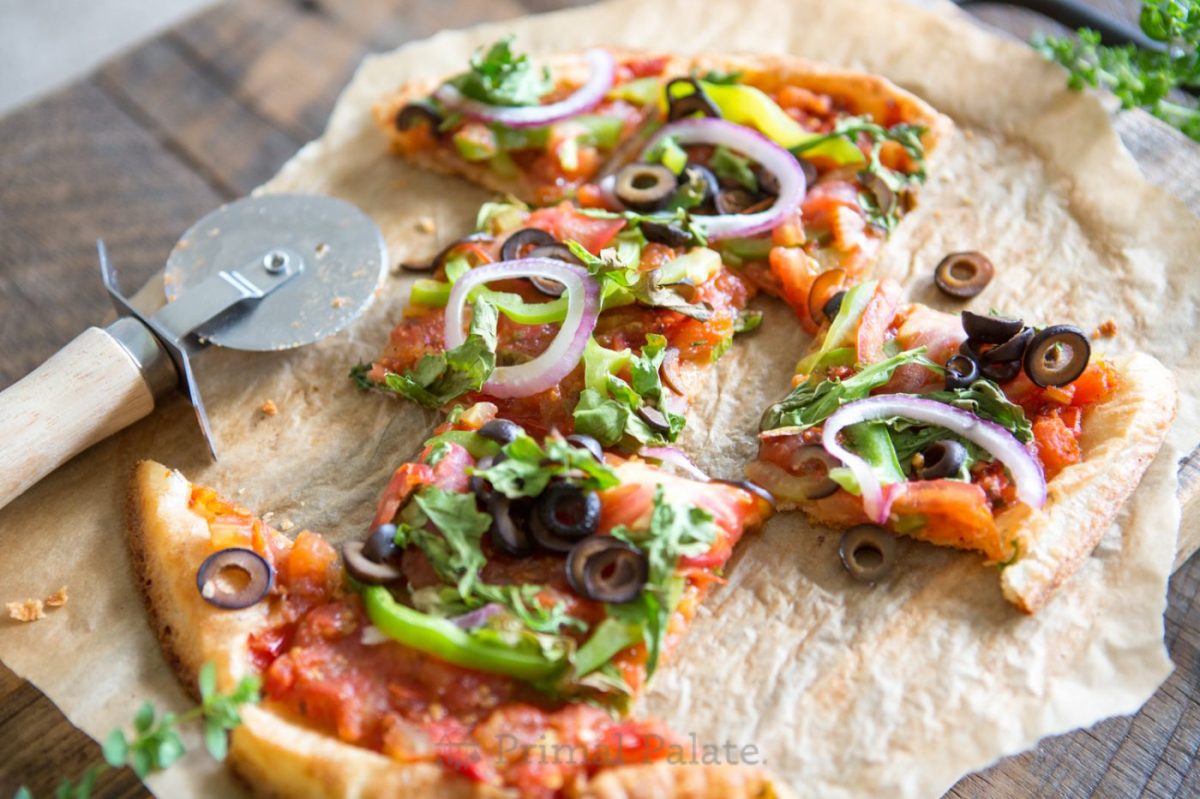Imagine a weekend where guilt-free indulgence meets vibrant flavor. Picture a crispy, golden-brown pizza crust, bursting with the aromatic sweetness of sun-ripened tomatoes and the earthy depth of perfectly roasted vegetables. This isn’t a dream; it’s the delicious reality of paleo pizza. Forget the carb-heavy, processed ingredients of traditional pizza; this guide unveils the secrets to crafting delectable paleo pizzas that are as healthy as they are satisfying, perfect for a weekend treat.
Paleo pizza embraces the principles of the paleo diet, focusing on whole, unprocessed foods that our ancestors would have recognized. We’ll explore creative crust variations—from nutty almond flour to subtly sweet sweet potato—each offering a unique texture and nutritional profile. Discover an array of vibrant sauce options, from classic tomato-based delights to zesty pesto and creamy cashew creations. Then, embark on a journey of flavor exploration with inventive topping combinations, carefully selected to enhance the overall taste experience. This is more than just a recipe guide; it’s a culinary adventure designed to elevate your weekend meals.
Crust Variations

Choosing the right crust is paramount for a truly satisfying paleo pizza. The base provides the foundation for your culinary masterpiece, impacting both the texture and nutritional profile of the final product. Three popular options – almond flour, cauliflower, and sweet potato – each offer unique characteristics that cater to different preferences and dietary needs.
Paleo Pizza Crust Comparison
The following table provides a concise comparison of three popular paleo pizza crust options: almond flour, cauliflower, and sweet potato. Each offers a distinct flavor profile and textural experience.
| Crust Type | Ingredients | Preparation Time | Texture |
|---|---|---|---|
| Almond Flour | Almond flour, eggs, olive oil, salt | 15-20 minutes | Slightly crumbly, nutty, and holds toppings well. |
| Cauliflower | Riced cauliflower, eggs, cheese, herbs | 30-40 minutes | Tender, slightly moist, and can be more delicate than other crusts. |
| Sweet Potato | Mashed sweet potato, eggs, almond flour, spices | 25-35 minutes | Soft, slightly sweet, and holds toppings well. Can be a bit denser than other crusts. |
Cauliflower Crust Paleo Pizza: A Step-by-Step Guide
Creating a cauliflower crust involves several steps to achieve the optimal texture and flavor. This detailed guide will help you through the process.
- Step 1: Ricing the Cauliflower: Begin by pulsing a head of cauliflower in a food processor until it resembles rice. Imagine a fluffy, snow-like texture – this is your goal. The cauliflower florets are broken down into small, uniform pieces.
- Step 2: Removing Excess Moisture: Wrap the riced cauliflower in a clean kitchen towel and squeeze out as much moisture as possible. This is crucial to prevent a soggy crust. Picture wringing out a wet sponge; you want to achieve a similar level of dryness. The cauliflower will transform from a wet mass to a more compact, drier consistency.
- Step 3: Combining Ingredients: In a bowl, combine the squeezed cauliflower rice with eggs, grated cheese (such as parmesan or mozzarella), and your favorite herbs (such as oregano or thyme). The mixture will have a slightly grainy texture, bound together by the eggs and cheese.
- Step 4: Shaping the Crust: Press the cauliflower mixture onto a parchment-lined baking sheet, forming a thin, even crust. Aim for a circle or a rectangular shape, depending on your preference. The mixture will be somewhat delicate at this stage.
- Step 5: Pre-Baking the Crust: Bake the crust in a preheated oven at 400°F (200°C) for about 15-20 minutes, or until lightly golden. This pre-baking step helps to set the crust and prevent it from becoming too soggy when you add the toppings.
- Step 6: Adding Toppings and Baking: Add your favorite paleo-friendly pizza toppings and bake for another 10-15 minutes, or until the cheese is melted and bubbly. The crust will be firm, but with a slightly soft texture from the cauliflower.
Nutritional Comparison of Paleo Pizza Crusts
The nutritional content varies significantly among the three crust types. Almond flour crusts are generally higher in fat and protein, while cauliflower crusts are lower in carbohydrates and calories. Sweet potato crusts offer a balance of carbohydrates, protein, and fat, along with a significant amount of vitamins and minerals. Exact values will vary depending on specific recipes and ingredients used. For example, a typical almond flour crust might have a higher fat content than a cauliflower crust, which would likely have a higher percentage of carbohydrates and lower fat content. A sweet potato crust would fall somewhere in between, offering a good source of carbohydrates, some protein, and a moderate amount of fat. These differences should be considered when selecting a crust to fit your individual dietary needs and preferences.
From the satisfying crunch of perfectly baked crusts to the explosion of flavors in each bite, crafting paleo pizzas becomes a weekend ritual you’ll eagerly anticipate. This journey through diverse crusts, vibrant sauces, and imaginative toppings has demonstrated that healthy eating doesn’t mean sacrificing flavor or enjoyment. Whether you’re a seasoned paleo enthusiast or a curious newcomer, these recipes empower you to create pizzas that nourish your body and tantalize your taste buds. So, gather your ingredients, preheat your oven, and prepare for a weekend filled with delicious, guilt-free paleo pizza creations. The aroma alone is worth the effort!
FAQ Corner
Can I make the paleo pizza dough ahead of time?
Yes, most paleo pizza crusts can be prepared a day or two in advance and stored in the refrigerator. This can save time on busy weekends.
What are some good substitutes for the suggested ingredients?
Many substitutions are possible depending on dietary needs and preferences. Experiment with different nut flours, vegetable purees, and herbs to customize your pizza.
How do I prevent the crust from becoming soggy?
Par-baking the crust for a few minutes before adding toppings helps create a crispy base. Also, avoid over-saucing the pizza.
Can I freeze leftover paleo pizza?
Yes, leftover paleo pizza can be frozen for later enjoyment. Wrap it tightly in plastic wrap and aluminum foil to prevent freezer burn.


